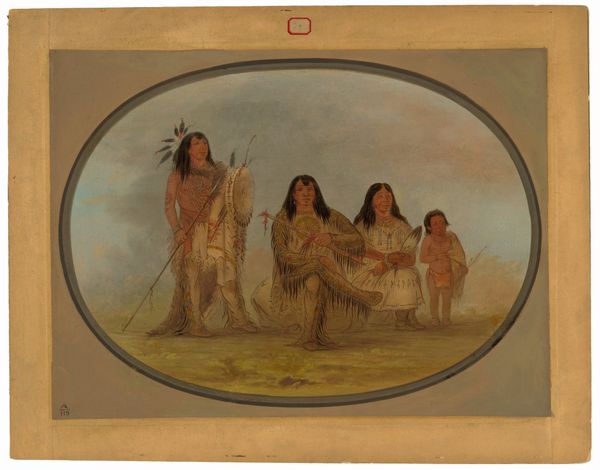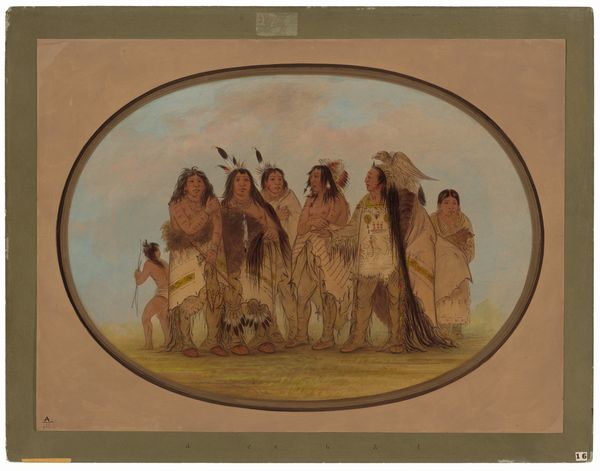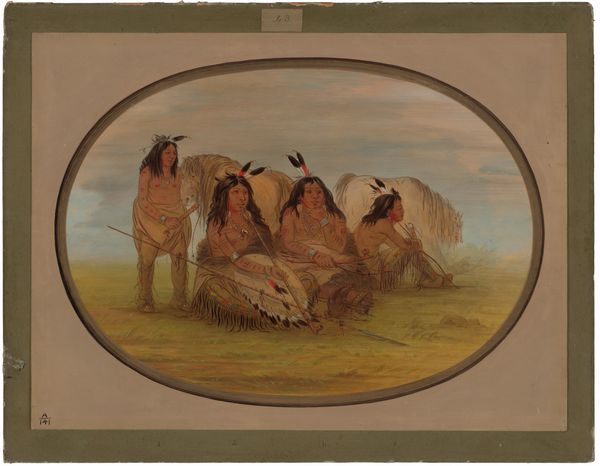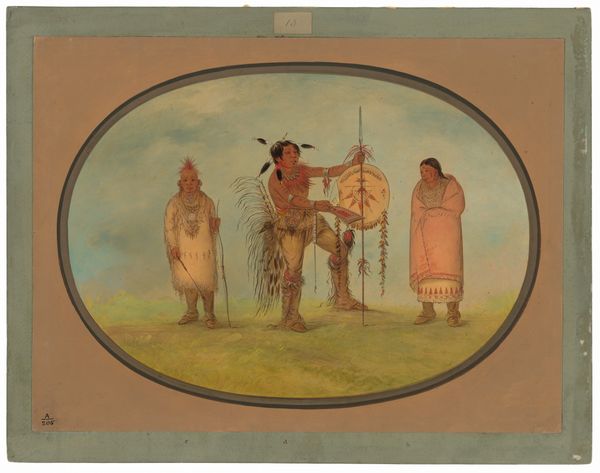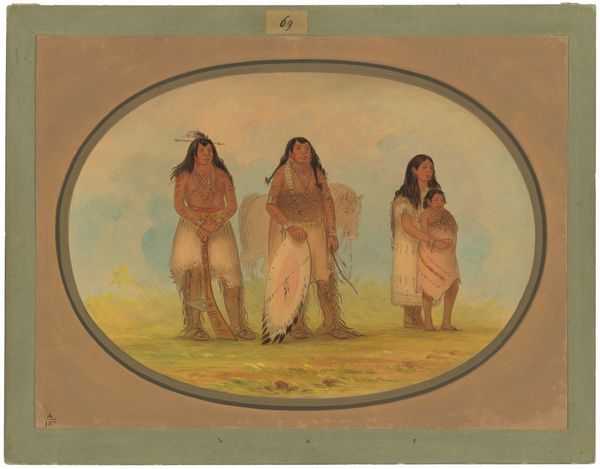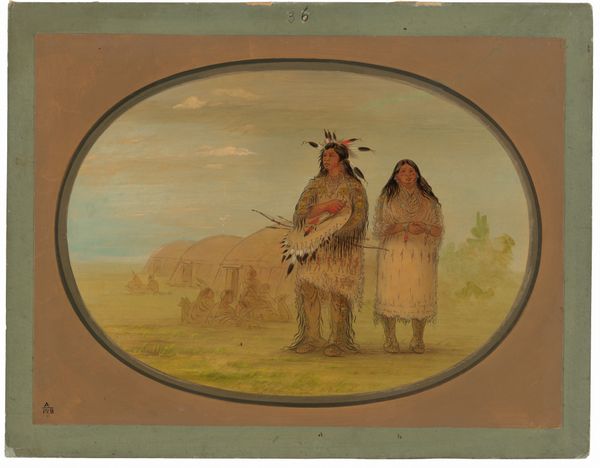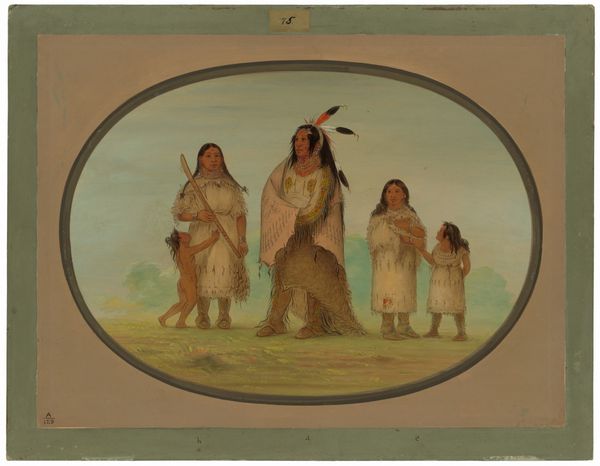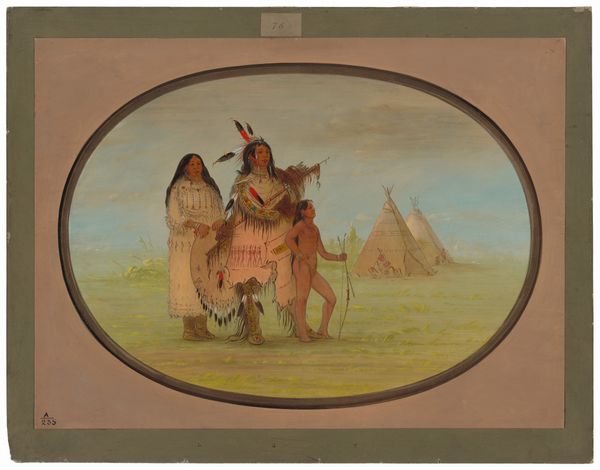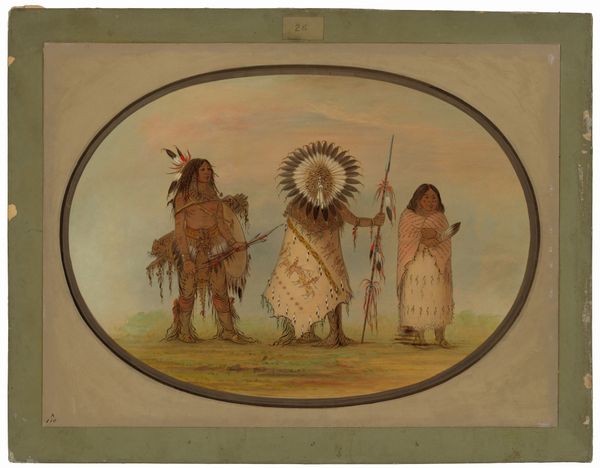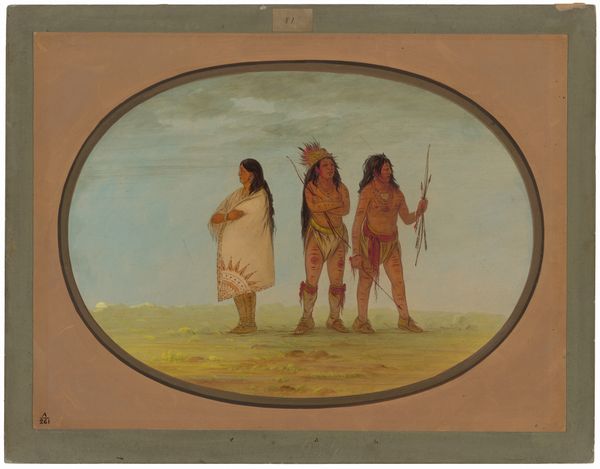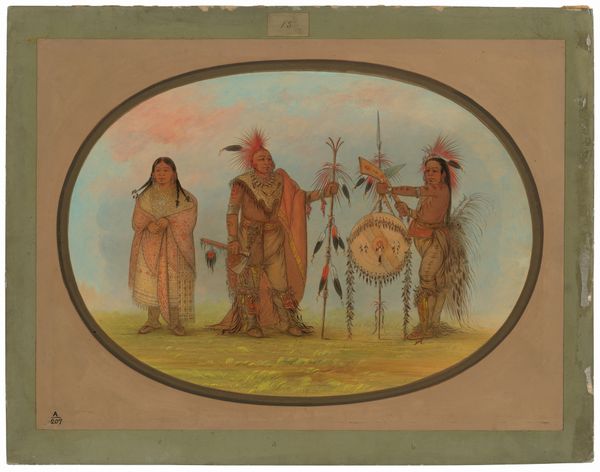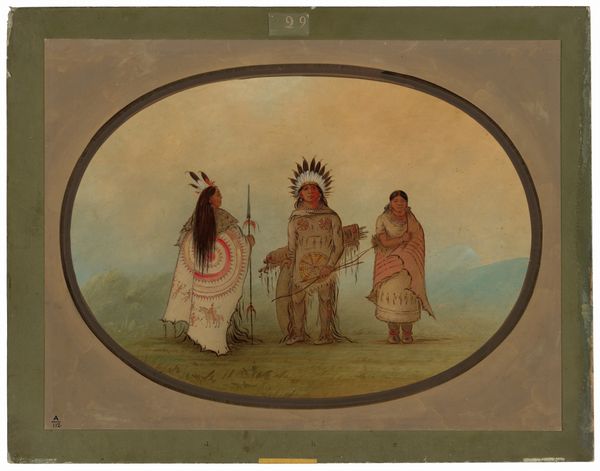
painting
#
portrait
#
water colours
#
painting
#
watercolor
Dimensions: overall: 47.2 x 63 cm (18 9/16 x 24 13/16 in.)
Copyright: National Gallery of Art: CC0 1.0
Curator: Looking at George Catlin’s watercolour painting from somewhere between 1861 and 1869, entitled "Four Mandan Warriors, a Girl, and a Boy," the initial feeling that washes over me is one of poised contemplation and, maybe paradoxically, resilience. Editor: Yes, the composition evokes a very specific emotional atmosphere! The limited palette really centers my attention; browns and ochres dominate the earth, while the pale sky hints at almost melancholy. It creates a sense of temporal suspension, a group caught between worlds. Curator: It's true. And consider this painting as part of Catlin’s larger ambition to document Native American life, a visual record amidst the rapid westward expansion and cultural erasure of the 19th century. You can interpret the long hair worn by each of these figures not simply as fashion, but perhaps an embodiment of cultural pride, endurance, resistance. I'd further add, a spiritual channel. Editor: Indeed, long hair carries significance. In many cultures, hair symbolizes strength, identity, and spiritual power. The arrangement—how one warrior guards his shield while the young boy practices with a bow—tells a complex story. There's a continuity here, knowledge being passed from generation to generation even in the face of adversity. The watercolor's fragile nature mirrors that delicacy too. Curator: You touch upon something essential! Catlin isn’t just showing us individual portraits, but representing shared stories—histories lived and histories yet to unfold. These subjects embody stoicism as the encroaching outside world loomed. The painting then becomes both record and elegy, if I may put it in my artsy ways! Editor: Elegiac is the exact right sentiment! Every element in this painting communicates shared experience through symbolism—the headdresses, shield patterns, garments! Cultural identity is articulated not just in each member, but more strongly as a group identity. Catlin creates an emotional bond that echoes over time. It causes reflection on our roles within these enduring continuities. Curator: Exactly. Perhaps through our discussion we are better able to interpret not just an image but the echo of an ancestral voice. It’s so quiet, but palpable now. Editor: I agree, by connecting past and present, images give voice to those collective experiences, which always resonates even today!
Comments
No comments
Be the first to comment and join the conversation on the ultimate creative platform.
